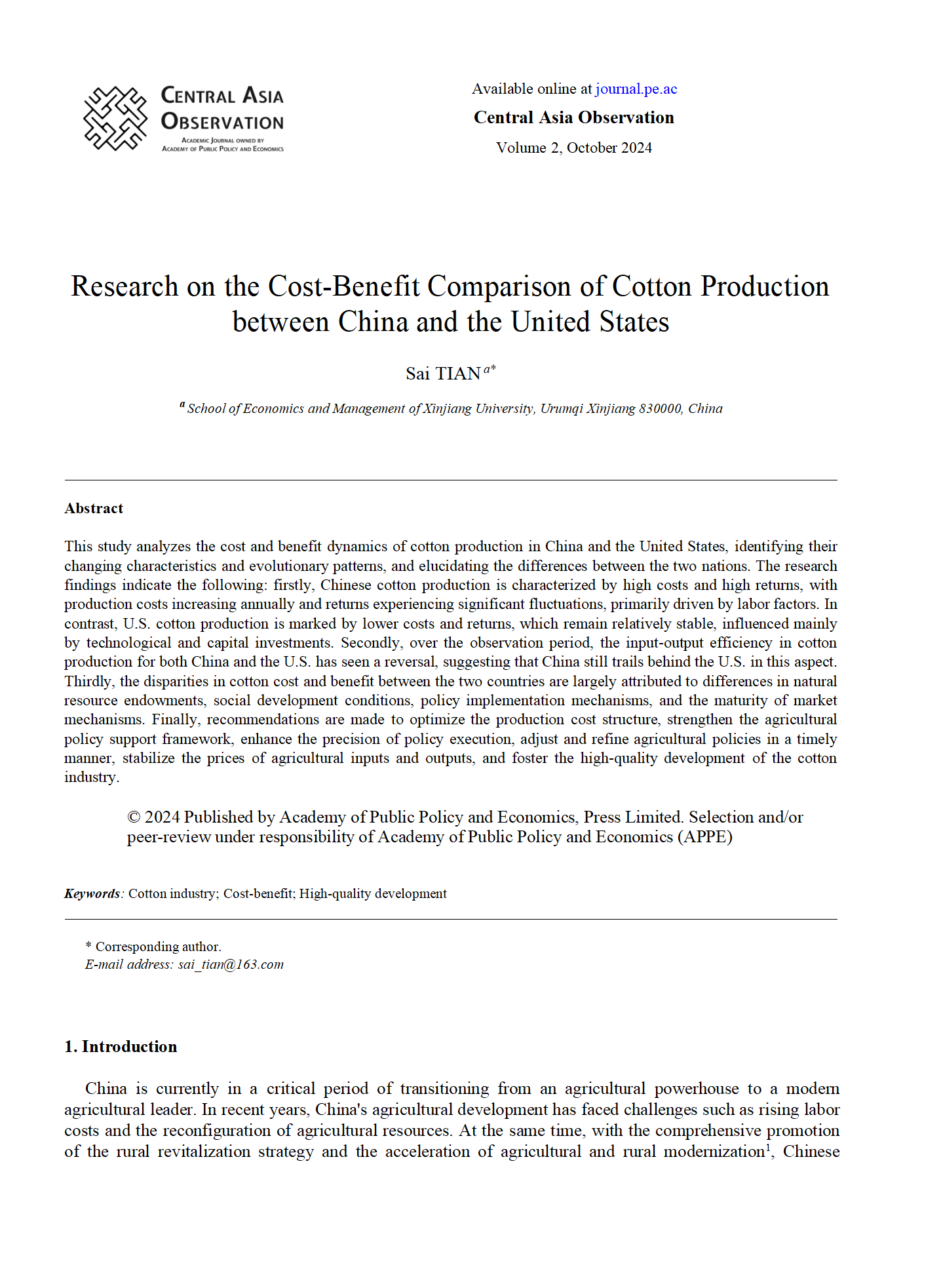Research on the Cost-Benefit Comparison of Cotton Production between China and the United States
DOI:
https://doi.org/10.62432/CAO.2.24.0301Keywords:
Cotton industry, Cost-benefit, High-quality developmentAbstract
This study analyzes the cost and benefit dynamics of cotton production in China and the United States, identifying their changing characteristics and evolutionary patterns, and elucidating the differences between the two nations. The research findings indicate the following: firstly, Chinese cotton production is characterized by high costs and high returns, with production costs increasing annually and returns experiencing significant fluctuations, primarily driven by labor factors. In contrast, U.S. cotton production is marked by lower costs and returns, which remain relatively stable, influenced mainly by technological and capital investments. Secondly, over the observation period, the input-output efficiency in cotton production for both China and the U.S. has seen a reversal, suggesting that China still trails behind the U.S. in this aspect. Thirdly, the disparities in cotton cost and benefit between the two countries are largely attributed to differences in natural resource endowments, social development conditions, policy implementation mechanisms, and the maturity of market mechanisms. Finally, recommendations are made to optimize the production cost structure, strengthen the agricultural policy support framework, enhance the precision of policy execution, adjust and refine agricultural policies in a timely manner, stabilize the prices of agricultural inputs and outputs, and foster the high-quality development of the cotton industry.

Downloads
Published
Issue
Section
License
Copyright (c) 2024 Sai TIAN (Author)

This work is licensed under a Creative Commons Attribution-NonCommercial 4.0 International License.

